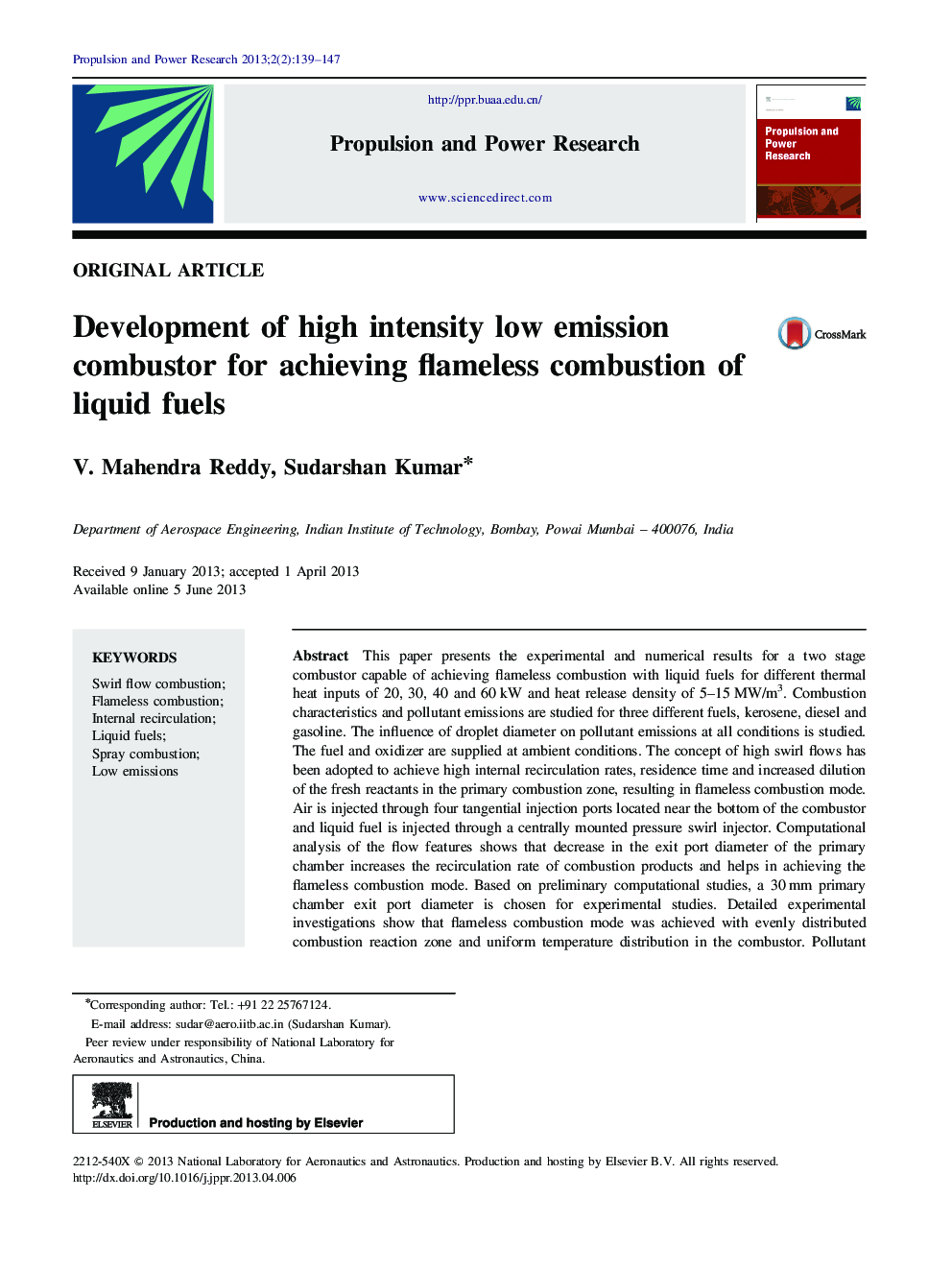| Article ID | Journal | Published Year | Pages | File Type |
|---|---|---|---|---|
| 1719676 | Propulsion and Power Research | 2013 | 9 Pages |
This paper presents the experimental and numerical results for a two stage combustor capable of achieving flameless combustion with liquid fuels for different thermal heat inputs of 20, 30, 40 and 60 kW and heat release density of 5–15 MW/m3. Combustion characteristics and pollutant emissions are studied for three different fuels, kerosene, diesel and gasoline. The influence of droplet diameter on pollutant emissions at all conditions is studied. The fuel and oxidizer are supplied at ambient conditions. The concept of high swirl flows has been adopted to achieve high internal recirculation rates, residence time and increased dilution of the fresh reactants in the primary combustion zone, resulting in flameless combustion mode. Air is injected through four tangential injection ports located near the bottom of the combustor and liquid fuel is injected through a centrally mounted pressure swirl injector. Computational analysis of the flow features shows that decrease in the exit port diameter of the primary chamber increases the recirculation rate of combustion products and helps in achieving the flameless combustion mode. Based on preliminary computational studies, a 30 mm primary chamber exit port diameter is chosen for experimental studies. Detailed experimental investigations show that flameless combustion mode was achieved with evenly distributed combustion reaction zone and uniform temperature distribution in the combustor. Pollutant emissions of CO, NOx, CxHy are measured and compared for all operating conditions of different fuels and different thermal inputs. The acoustic emission levels are reduced by 6–8 dB as combustion mode shifts from conventional mode to flameless combustion mode.
